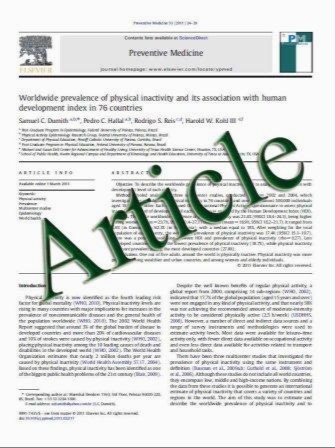Treatment for older men with fractures
- نوع فایل : کتاب
- زبان : انگلیسی
- مؤلف : A. J. Shepherd & A. R. Cass & L. A. Ray & A. Tan & G. S. Wilkinson
- چاپ و سال / کشور: 2011
Description
Summary Less than 10% of men receive osteoporosis treatment, even after a fracture. A study of 17,683 men revealed that older men, those with spinal fractures, and those taking steroids or antidepressants are more likely to receive treatment after a fracture. Seeing a primary care physician also increases osteoporosis treatment rates. Introduction In 2000, the FDA approved bisphosphonates for the treatment of osteoporosis in men. The purpose of this study is to estimate the frequency of bisphosphonate therapy within 12 months following a fracture and describe patient/physician factors associated with treatment. Methods Health insurance claims for 17,683 men .65 years of age, who had a claim for an incident fracture from 2000 to 2005, were followed for at least 6 months post-fracture for the initiation of treatment with a bisphosphonate. Patient characteristics, diagnostic procedures, therapies, co-morbidities, and provider characteristics were compared for men who received treatment with those who did not. Results Eight percent of men (n=1,434) received bisphosphonate therapy. Overall treatment increased from 7% in 2001 to 9% in 2005 (p<0.001). Treatment for hip fractures remained at 7% (p=0.747). Treatment increased with age: 6% in men aged 65.69 compared to 11.6% in men aged 85. 89 (p<0.001). Factors associated with treatment included: diagnosis of osteoporosis (OR=8.8; 95% CI, 7.7, 10.4), glucocorticoid therapy (OR=3.2; 95% CI, 2.4, 4.3), bone mineral density measurement (OR=3.4; 95% CI, 2.9, 4.0), and antidepressant therapy with tricyclics (OR=2.0; 95% CI, 1.2, 3.5) or selective serotonin reuptake inhibitors (OR=1.7; 95% CI, 1.3, 2.4). Men with vertebral fractures (OR=2.2; 95% CI, 1.8, 2.6) and men seen by primary physicians (OR=2.6; 95% CI, 2.3, 3.1) were more likely to receive treatment. Conclusions Less than 10% of men received bisphosphonate therapy following a low-impact fracture. Men with a primary physician were more likely to receive bisphosphonate therapy; however, <25% of men were seen by a primary physician.
Osteoporos Int DOI 10.1007/s00198-011-1681-3 Received: 27 January 2011 / Accepted: 17 May 2011


